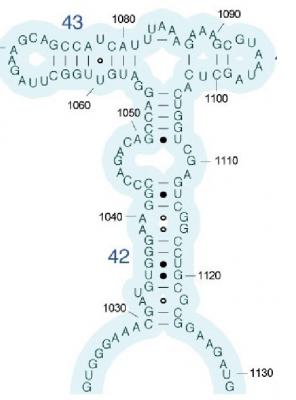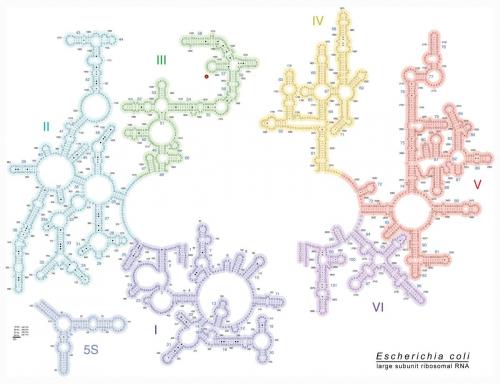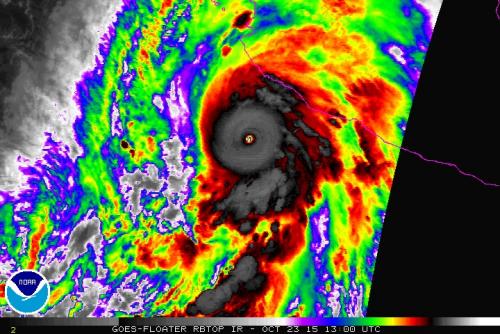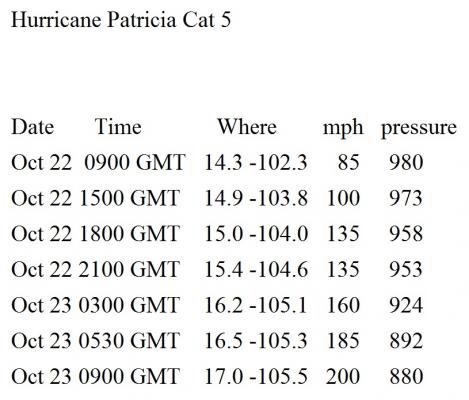

SStell
Senior Members-
Posts
59 -
Joined
-
Last visited
Content Type
Profiles
Forums
Events
Everything posted by SStell
-
If my assumption was that we knew very little of nucleic acid chemistry I certainly wouldn't be asking about it. All I wanted to know is what is our present capability of producing mass amounts of specific sequences and mixing them and then analyzing solutions containing them. You answered that all for me. So thank you for your information, links and time. I was hoping for a more fluid dialogue regarding abiogenesis with people interested but I needed a lot more information before I would be starting in such a discussion. Again, I was just asking for our present capabilities and I don't consider that 'speculation'. But somehow my inquiry into our present status was somehow deemed speculation and now my thread is in the speculation file. I do not consider asking about present technologies and techniques that could be used to study abiogenesis to be speculative in the least. But it makes no difference. I did assume that our experimental attempts had been in a more or less top down structure. Starting with the complex present day catalysts and working our way down to smaller ones, I was just wondering whether what attempts had been made in the bottom up scenario. Starting with small chains and working our way up. But this will have to wait for another day. Thanks again for your information, terms, links and time.
-
""""The ribozymes are generally large molecules yet the shortest ribozyme is only UUU and it acts on CAAA. A two-base ribozyme may catalyze the formation of 3′,5′ phosphodiester linkages 36,000-fold faster (Reader JS, Joyce GF 2002 Nature [Lond] 420:841)."" So I guess my query was not as far fetched as some may think. But thanks anyhow.
-
Charon, why would a long chain of amino acids (a protein) catalyze a linking of nucleotides but a shorter one just isn't going to do that? You say there is a large gap between simple organics and life, but for some reason discount the study of THAT GAP. I do thank you for the information you have provided and I also look forward to looking into the terms you provided me for further research. I just find it a bit strange that you state there is a gap but are unwilling to entertain any ideas about studying that gap. I find it extremely difficult that we can say conclusively that small sequences of RNA and small peptides with a chemical energy source absolutely cannot react to form any new molecules such as longer chains, shorter chains, whatever. Even as I mentioned a one in a billion or one in a trillion chance. That is a pretty conclusive statement you made regarding something that you admitted was a large gap in our understanding. I gave you a very simple possible experiment and labeled it as such only to explain what I wanted to know about our technological skill level which matched the title of my thread. I was not limiting the thoughts to just that simple concept. We could change temperatures, concentrations, toss in different metallic ions etc etc etc. I wanted to know if we could analyze the resultant solutions to determine if a one in a trillion reaction did occur and given the amounts I mentioned would be a considerable number. I think you said it would be easy to analyze that type of solution and that is what I wanted to know, so thanks. We have already found that with repeated wet and dry cycles, radiation, other chemical additives, etc. DO cause things to happen. So I am a wee bit shocked at your conclusive declarative and absolute statements regarding experiments that apparently have not been done. But again I thank you for your time and information.
-
Charon, maybe I missed the discovery of how abiogenesis works. You say "I am not sure how any of this relates to abiogenesis as they are relatively complex molecules to begin with." Seeing that I have never seen the evidence that abiogenesis started with relatively complex molecules to begin with I sure would like to hear about them and how those 'complex' molecules would have formed. Wouldn't complex molecules have come about from less complex ones? And wouldn't these simpler molecules have had to come about fairly simply. I was just working somewhere in the middle with sequences of 3, 4, 5, 6 etc. I was also under the impression that we did not know exactly how abiogenesis worked and were actively trying to figure it out. I guess I was way off. So please steer me towards this information if you would please. What I had hoped to find out was what our present level of technology was and was any of what I asked about even possible. You say all of it is possible but it would just be a waste of time doing it seeing as we already know what these molecules can do. Well if that is in deed the case then I truly do look forward to reading about how abiogenesis has been shown to function. I truly thought it was still a mystery. What I am still asking for is our state of chemical analysis techniques. If we did as I have proposed would we be able to analyze the resultant solutions and determine what new molecules were formed- if any. Could we even tell whether a 3 base segment bonded to another 3 base segment? Do we have the technology to analyze a solution with literally trillions and trillions of molecules interacting and some making different molecules and what those molecules were- if any? Or could we state that nothing at all happened. But I do wish to skip all the preliminary lab work and get right to the heart of the matter. How does it work. Like I said, I thought it was still somewhat of a mystery. So I truly look forward to any research that can shed some light on this for me, thank you.
-
Charon, unless you think abiogenesis is unlikely, then small molecules such as short sequences of RNA and short sequences of amino acids and some energy source most likely from something like nTPs did something. Isn't the role of science to figure out how things work? To discover new things in new ways? Using incredibly large quantities at high densities of different combinations for different trials may illuminate some rare but real reactions between these short strands and to illuminate many new ideas as to how molecular evolution can happen. I thought I made that pretty clear in my last post. I guess it boils down to can we make large quantities of exact short sequences of amino acids, RNAs, single nTPs and could we actually collect data on the rare and even bizarre reactions that might happen? Using my previous example: Are there any RNA chains and or amino acid chains of 4 or 5 or 6 detected and at what percentages. What changed? Or are there absolutely no reactions observed. Do we have that ability? I was interested in the state of our technical skill level as to our ability to analyze something like this and any information along these lines. As I stated previously,"Analyzing the solution for chain length changes or sequence changes. Are there breakages, extensions, complimentary replications, hydrogen bondings, replacements, substitutions and every other possibility and what are the percentages of each if any?" Are there patterns of reactions that have not been seen before? I thought that was what science was all about. Looking for things not seen before, making discoveries. So I just wanted to know what the state of biochemical skills and analysis were at and ANY other information along these lines that anyone knew about. Thanks.
-
Charon, you say dropping a bunch in a bucket of water won't do anything, well they may have once, and in order to figure out how that may have happened and be able to understand it one would need to be able to manipulate, regulate and duplicate exact species of short RNA sequences and short amino acid chains. I guess my interest lies in whether anyone has tried every possible combination of short RNAs and very short proteins and if that data collecting strategy was even possible and if so what data has been collected concerning the possible reactions. I would imagine using ATP, GTP,CTP and UTP or ADPs etc might activate a special reaction which is a one in a billion chance. They do that with massive numbers of subatomic particles at high densities, where highly unlikely things happen just enough times as to be able to be studied. Are we using that approach with abiogenesis? Is it even possible at this time? For a simple example: 1 liter of a 10 molar solution of the RNA sequence AGU plus 1 liter of a 10 molar solution of amino acid sequence Serine-Glutamine-Histidine plus 1 liter of a 10 molar solution of adenosine triphosphate, is this something that is possible at this time and if so has anyone done anything of this nature? And most importantly would be what is our status in regards to analyzing a solution of this nature? Can we actually gather data of any use for study in this matter? Can we notice a one in a billion chance reaction that uses a 3 or 4 n-base chain with a 3 or 4 amino acid chain with a few nTPs and figure out the structure of the product or products? Or prove somewhat conclusively that no reactions occurred? Just trying to see the state of our ability to do something like this. Analyzing the solution for chain length changes or sequence changes. Are there breakages, extensions, complimentary replications, hydrogen bondings, replacements, substitutions and every other possibility and what are the percentages of each if any?
-
I am just wondering how far along or how advanced is our technology in regards to manipulating individual nucleotides and amino acids. For a simple example: can we make an AUC sequence in the lab? Can we multiply that? Can we drop a million of these sequences in a bucket of water? Can we do something similar with amino acids? Just trying to see were we stand in the technology. If someone can steer me towards the appropriate and accessible information that would be greatly appreciated. Thanks
-

Is the ribosome impervious to evolution?
SStell replied to SStell's topic in Evolution, Morphology and Exobiology
CharonY, thanks for your reply. I guess using more appropriate terminology my question boils down to whether it is JUST the ribosome's structure that is conserved whereas the actual nucleotide base sequence can be variable. For example I have included a more viewable section of the ribosome for discussion. Could say nucleotide #1110 be exchanged for another base and have no ill effects whereas if that occurred in mRNA could be disastrous? The structure has not changed, thus absorbing a random mutation without consequences. Or could base #1110 be removed completely and the overall structure would be only very slightly changed? I guess what I am really asking is whether I am barking up a tree that has already been barked up and found empty? I see that you say that the base sequence is conserved but is that only in the active sites and the other parts can and are changeable and can be used in phylogenic studies. Can you steer me to a site that has comparisons of ribosome? Is there any variability between any of the more than 200 copies found just in the human genome? Just looking for more information. Thanks for all your help. -

Is the ribosome impervious to evolution?
SStell replied to SStell's topic in Evolution, Morphology and Exobiology
MEC1960 I do not mean that the ribosome does not change, it very much does so, as does everything related to DNA. My point is that it seems to me that a large percentage of changes could occur (not all simultaneously) without changing the ribosome's function. All of which I described in the original post. I am just wondering has anyone else pursued this avenue. Did its structure evolve to a point that it can absorb random mutations without the catastrophic effects found in say having a random mutation in mRNA coding for a protein? That is all I meant by impervious to evolution. Impervious to detrimental structural changes caused by random mutations. Thanks for the antibiotic information. I will see what I can find along those lines as far as what parts are being changed that results in resistance. Well unless you know and were willing to share which would save me some time. -
While gazing upon a diagram of the secondary structure of the large sub-unit of the E.Coli ribosome. I came to the conclusion that this structure seems to be nearly impervious to evolution or at least to small scale mutations. I wondered how many base changes could occur before its performance was halted. There are scores of loops and scores of helixes. I would think many changes could occur on the loops and only cause extremely minor tertiary changes. I would also think that a number of changes could occur in the helixes and only cause a slight bump or tighter or loser twist. In the helixes double hydrogen bonded pairs could be switch around with no backlash as could triple bonded pairs. AU to UA and CG to GC. Double and triple bonded pairs could be interchanged without a noticeable effect. AU to CG. Pairs could be missing altogether and not much changes. Once this structure evolved to be nearly indestructible the true evolution of proteins could take hold. I would think that only changes in the bases of the active sites where the rRNA bases come into contact with the bases for mRNA and tRNA could amount to anything catastrophic and any changes to the vast majority of the bases would only very slightly enhance the function or only very slightly decrease the function. Having larger loops or longer helixes causing bulges in the tertiary structure may enhance the stability of the ribosome in its fluid environment or help it attach better to the endoplasmic reticulum. This is completely different than the sequence found on a messenger RNA where one base change changes the reading sequence of the code for a protein which many times is catastrophic. There are a couple hundred copies of rRNA in the human genome. I wonder how much difference there can be between the different copies. In other words is rRNA such an extremely flexible and potentially variable sequence of bases that it has become basically indestructible to small errors and mutations and it is this property that has made it probably the main thing for life. Does anyone know of any research being done along those lines or wish to banter about it?
-

Coding and non-Coding vs Leading and Lagging strands?
SStell replied to SStell's topic in Biochemistry and Molecular Biology
Thanks So the names are just based on the activity occuring. -
Can anyone shed some light on the hydrogen bonding ratios for the bases in RNAs? Why is there an 8 to 1 ratio for double (A-U) to triple bonds(G-C) in the transfer RNA and almost the exact opposite for the ribosomal RNA? Are the triple bonds more stable AND more conserved evolutionarily? Are the double bonds more flexible and tRNA does more flexing whereas the rRNA does less flexing? Any speculation or links?
-
Hurricane Patricia is heading towards Mexico with wind speeds over 200 mph and a central pressure of 880 mb. This is one of the most powerful hurricanes recorded. Does anyone know how low a pressure can possibly go and why? Data for Hurricane Patricia Hurricane Wilma had the lowest pressure in the Atlantic at 882 mb and Typhoon Tip in the Pacific at 870 mb. Hurricane Patricia is doing her best to break all the records and is now predicted to hit at cat5 status!!! Here is the visible shot.
-

Are charged tRNAs being sorted entering the ribosome?
SStell replied to SStell's topic in Biochemistry and Molecular Biology
Am I completely confused on this one in twenty crap shoot? I opened a new topic on the percent abundances of tRNA codes etc and any information on this is helpful to me. -
I am interested in knowing IF there is any statistical correlation between the number of tRNA code COPIES for each type, the number of tRNA synthetase code copies for each type and the abundance of each amino acid found in humans. Or is there any hard data that you could steer me to on this? For example: 7 copies of tRNA alanine, 7 copies of tRNA synthetase alanine, alanine occupies 3% of amino acids found in human proteins
-

Are charged tRNAs being sorted entering the ribosome?
SStell replied to SStell's topic in Biochemistry and Molecular Biology
The twenty attempts is because there are at least 20 distinct types of tRNAs and only one is of any use at that particular time. If there are a few hundred or thousand tRNAs swarming about the entrance to the ribosome all being imported into it with the EF-Tu but only one out of every twenty has the proper anticodon then on average there would be about 20 wrong ones. There could be a hundred wrong ones. I am just having a difficult time seeing that as a reasonable system. I was thinking there might be some conformational change in the ribosome that only allows certain tRNA in at a particular time. For example, if the mRNA codes for ATG then maybe only tRNAs with a T for the first anticodon letter would be allowed in, thus reducing the number of wrong attempts from an average of 20 down to an average of five. Or even only allowing tRNAs in that have a purine as the first letter or just a pyrimidine, thus cutting the chances down to 1 in 10. Many species have more than 20 types of tRNAs ( I think ), some with a lot more due to there being 62 possible codon possibilities. I am just barking up trees to see if there is anything in them. Thanks. I agree that the ribosome is an enzyme but it is a very big complex one. It has some sort of channel that everything must travel down and to have only a 1 in 20 chance seems to be inefficient to me. But like I said, if that is how it works then there ya go. -

Are charged tRNAs being sorted entering the ribosome?
SStell replied to SStell's topic in Biochemistry and Molecular Biology
Babcock, do the first and second steps happen inside the ribosome? Again I think that this would be an extremely inefficient way of doing things but if that is how it works- then that is how it works. It would on average go through 20 incorrect attempts before getting the right one. Life seems to have overcome inefficiencies quite often and I just find it hard that this most important activity would rely on pure chance and cause a bottleneck every time. -
John, thank you for that highly interesting molecule. Are there a whole bunch of triangular "ringed" cyclo molecules out there or are they somewhat rare?
-
Can someone shed some light on how charged tRNAs being escorted into the ribosome by EF-Tu are sorted out if in fact they are? Do all 20+ types just go in haphazardly and fit or not fit the mRNA template or are they some how selected for entrance. Is there some type of ribosomal conformation change that only let's in certain types depending on the code being needed? It seems to be somewhat inefficient to have to go through numerous tries for each and every amino acid installation. If it is completely random this could go through way more than just 20 tries for each correct one. If you have a 20 sided dice and you need a '3'. How many times can you throw it without getting that 3, it could be scores and scores could it not? Is there some type of sorting based on the class of the tRNA synthetases that were involved? Just really curious about the whole thing.
-
Charon, thanks again Are there enzymes that attach the oxygens to the phosphorus or are all the phosphates ingested?
-

Coding and non-Coding vs Leading and Lagging strands?
SStell replied to SStell's topic in Biochemistry and Molecular Biology
Charon, thanks. I am not trying to make a pest of myself but I just want to make sure I got this correct in my head. So in DNA replication the polymerases need to synthesize in opposite directions from the replication fork and one strand is called the leading strand and the other is called the lagging strand and that they are chosen arbitrarily? I understand the NEED for the lagging strand mechanisms but I am having a hard time seeing the evolution of those mechanisms. I asked this question as a separate topic on the evolution section and have not received a single reply. Now- you are stating that both strands of the DNA can and do code for RNAs? And that the templates do not overlap too often? Here are the two strands of DNA- A and B A ---------------------------------- -------------------------- --------------------------- B ----------------- ---------------------------- ----------------------- and the dashed lines are templates for some type of RNA. Is this somewhat correct? And the gaps are just non-coding sections? -

Coding and non-Coding vs Leading and Lagging strands?
SStell replied to SStell's topic in Biochemistry and Molecular Biology
Charon, so there are two strands of DNA. In DNA replication one is called the leading strand and the other is the lagging strand. In RNA synthesis transcription one DNA strand is the coding strand and the other is called the non-coding strand. Now, are you saying that both DNA strands may be used to synthesis or transcribe RNA? If so, doesn't that change our genome from `3 billion bases to `6 billion? Or am I just very confused? In DNA replication is there a determining factor that leads to the determination of which strand will be the leading strand and which will be the lagging strand or is just completely arbitrary and does not matter at all? -
Thanks John for your link. And thanks again to you Babcock. I just finished reading Hunter's paper and a review of Westheimer's. I think I know now more than I wanted too. But really- the phosphate group seems to be just as fundamental to our replicating molecules as anything else and it seems to always be glossed over.
-

Can Science explain everything in the universe without a God?
SStell replied to Henry McLeod's topic in Religion
Just because we may not know some detail of nature right now does not imply that we will not know it or that we cannot know it in the future. To just plug in a magical entity to fill in that gap is not worthy of consideration. And to pick a particular human created god from one particular culture from a long time ago as an answer to anything screams laziness to me. We have been told that we cannot explain existence without this magician but we are not permitted to question this magician or ask where it came from either. If we cannot explain existence without the use of a god, then explain that god without the use of the our existence. Why do we exist or why does this god exist? What is your purpose? What is this god's purpose? I will always put my money on how my highly evolved brain interprets the evidence I see, not in what some particular culture decided to tell itself.





